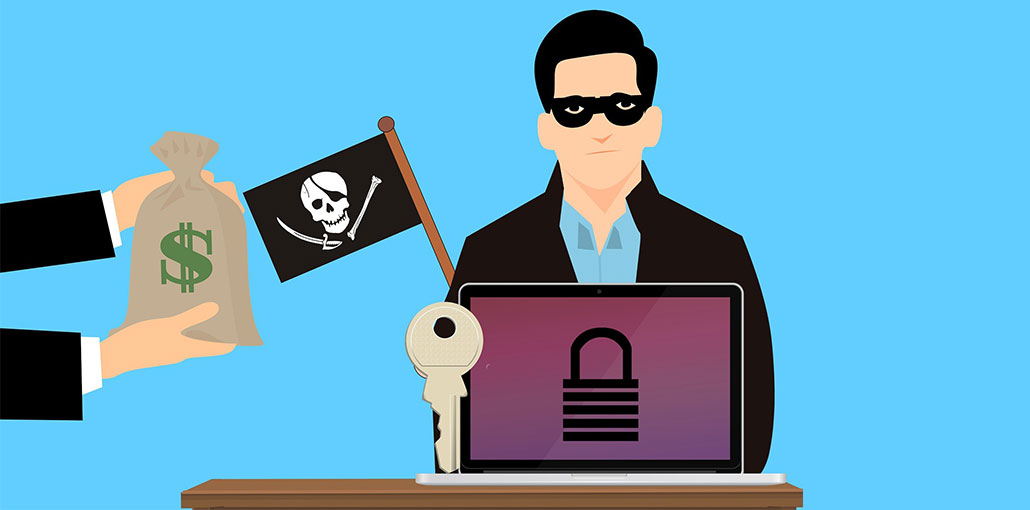Ransomware has become one of the most common types of cyberattacks in recent years, and there are many different ways to get it. Ransomware, also known as cryptovirus, is an increasingly popular form of malware that basically takes your computer hostage until you pay up.
This article will teach you how to protect yourself against the different types of ransomware out there and how to recover your files after your PC gets infected with it.
For more information on protecting yourself against this threat, keep reading!
When you hear the word ransomware, do you think of hackers who have encrypted your computer and asked for money to restore your access? If so, you’re not alone; but it turns out that there are other ways to get infected with ransomware, some much sneakier than others.
What can be done to protect against ransomware?
Here are five ways to protect yourself against ransomware, whether it comes in the form of a malicious email attachment or a fake app on Google Play.
1. Stay Up-to-Date
One of the easiest ways to protect yourself against ransomware is to stay up-to-date with software updates. Unlike most types of malware, ransomware typically needs access to your files or network to do its thing, and many antivirus programs will block it at that point.
So, if you’re making sure you have all the current patches for Windows and other operating systems, you’re already one step ahead of those who don’t bother updating their computers regularly.
Of course, there are still plenty of other ways to protect yourself against ransomware, including taking preventative measures on your end but knowing how to avoid an infection once it’s on your computer is a good place to start.
Also read: How to Protect Yourself from Internet Threats
2. Install Antivirus Software
Antivirus software is probably your best protection against ransomware attacks. The software can identify and stop many of these threats before they start, although malware will always find a way to bypass some security features. Keep your antivirus software updated, as new viruses are constantly created.
If you’re interested in more advanced protection, consider investing in an antivirus suite with antimalware and firewall capabilities like Bitdefender Total Security, Avast Ultimate Suite, or McAfee Total Protection. These tools tend to be more expensive than standalone antivirus programs but offer better overall protection.
However, you can purchase an antivirus subscription at reasonable prices from software discount stores like Dealarious. But is it safe to buy antivirus from Dealarious? Is there a way to contact store support in case of any issues? Dealarious provides valid antivirus licenses and delivers good customer service. Always do your due diligence before planning to purchase online.
3. Backup! Backup! Backup!
You can protect yourself against ransomware by backing up your important files regularly. Backing up your data is also an important way to protect yourself from viruses and other malware.
Depending on how many files you have, setting up a system for backing them up maybe time-consuming but worth it if you get hacked.
For example, you could use an external hard drive that automatically copies your most important files to a backup folder every day. Or, you could use cloud storage services like Dropbox or Google Drive to store all of your files in one place, so they’re always backed up and accessible from any device with internet access.
4. Keep an Eye on Servers and Services
There are plenty of things that you can do to protect yourself against ransomware, such as keeping an eye on your systems and keeping them updated. However, most people never take any action after hearing about a big cyber attack because they simply don’t know what they should be doing or how they can prevent attacks.
If you’re looking for ways to protect yourself from ransomware and other malware, several free resources will provide good starting points. For example, if you want to keep an eye on your servers and services, one great resource is Security Onion.
The project offers several different tools that work together to give you detailed information about potential threats, and it’s completely free!
Also read: Best 10 Multi-Factor Authentication (MFA) Software Solutions
5. Use Two-Factor Authentication
One of our favorite ways to protect ourselves against ransomware is two-factor authentication. With 2FA, after you enter your password, you’ll receive a second code via a text message or email required to log in.
This means no one can access your account without your password and an additional piece of information.
For example, if someone were to try logging into your Gmail account from another computer, they wouldn’t be able to get in unless they had both your password and your phone with them.
Two-factor authentication also protects you against phishing scams, which are attempts by cybercriminals to trick people into giving up their login credentials because it requires a separate piece of information before granting access.
Conclusion
Since the encryption that ransomware relies on to lock your data is extremely strong, it’s very difficult to recover your files if you don’t have backups, so it’s important to take steps to protect yourself against ransomware in any way you can, starting with these five methods mentioned above.
While there is no clear-cut solution for protecting yourself against ransomware, there are a few things you can do to help protect your data: Make sure you’re running updated versions of your software, back up your data regularly, and keep copies on an external device and/or offsite, and practice safe browsing habits.










Leave a comment